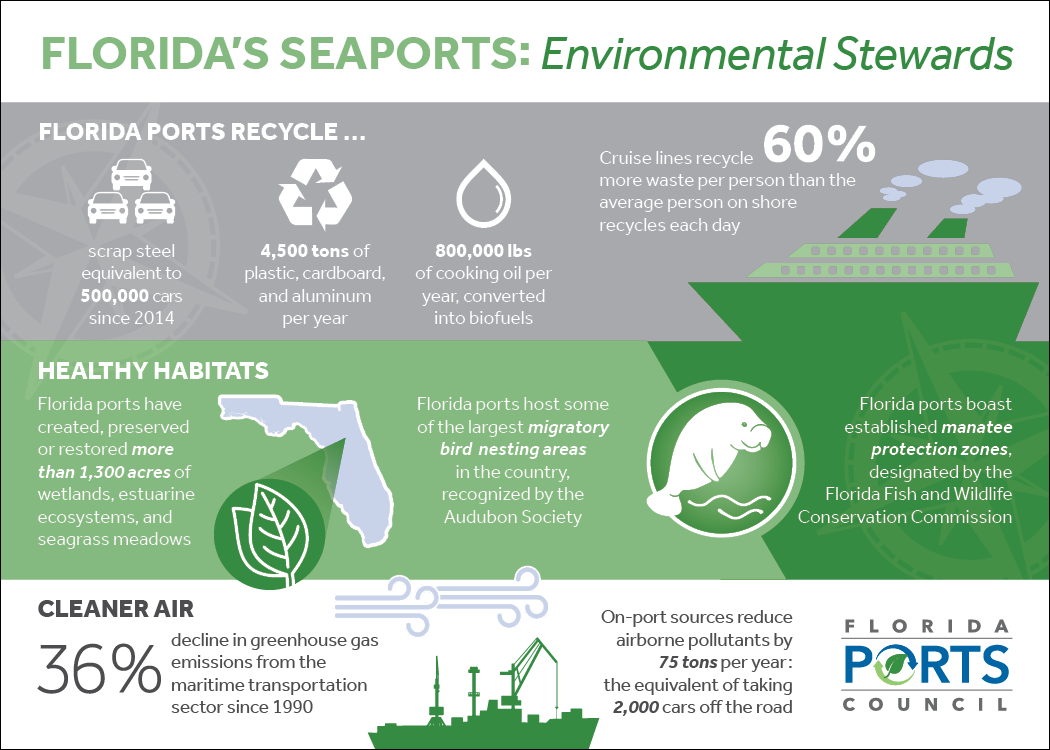Statistics and Data
Florida seaports decrease the state’s environmental footprint. Waterways can accommodate more cargo using fewer trips with larger, greener vessels. This, in addition to current air and water quality initiatives, recycling programs, energy efficiency efforts, and technology upgrades, continues to demonstrate the ports’ dedication to environmental stewardship.

Additional Statistics:
- Total emissions from stationary sources within Florida ports declined approximately 2.3 percent from 2010 to 2015. That’s a reduction of more than 75 tons of pollutants per year, the equivalent of taking 2,000 cars off the road.
- Greenhouse gas emissions from the U.S. maritime transportation sector have declined 36 percent since 1990 (U.S. Environmental Protection Agency, Office of Transportation and Air Quality, EPA-420-F-16-020, June 2016)
- Average vessel size at U.S. Ports has increased 6.3 percent since 2006, which decreases the number of trips needed to transport goods
- Fuel consumption from the U.S. maritime transportation sector has declined 26 percent since 2007 (U.S. Department of Transportation, Bureau of Transportation Statistics, Freight Facts and Figures, 2015)
- Cruise line waste management professionals recycle 60 percent more waste per person than the average person recycles on shore each day
*NEW* The U.S. Environmental Protection Agency released the NATIONAL PORT STRATEGY ASSESSMENT: Reducing Air Pollution and Greenhouse Gases at U.S. Ports, estimating current port industry air emissions and outlining strategies to reduce air emissions from port-related activities.
